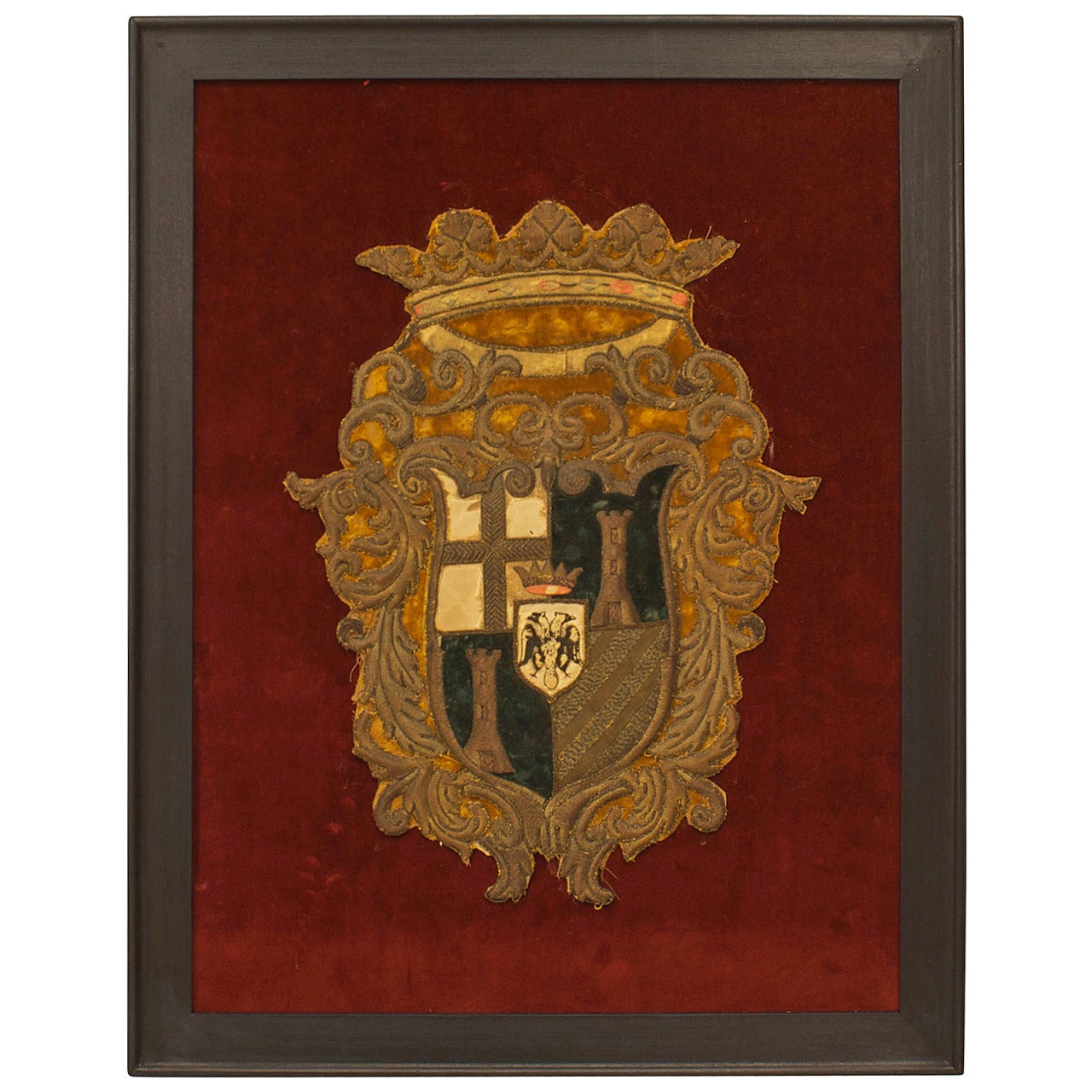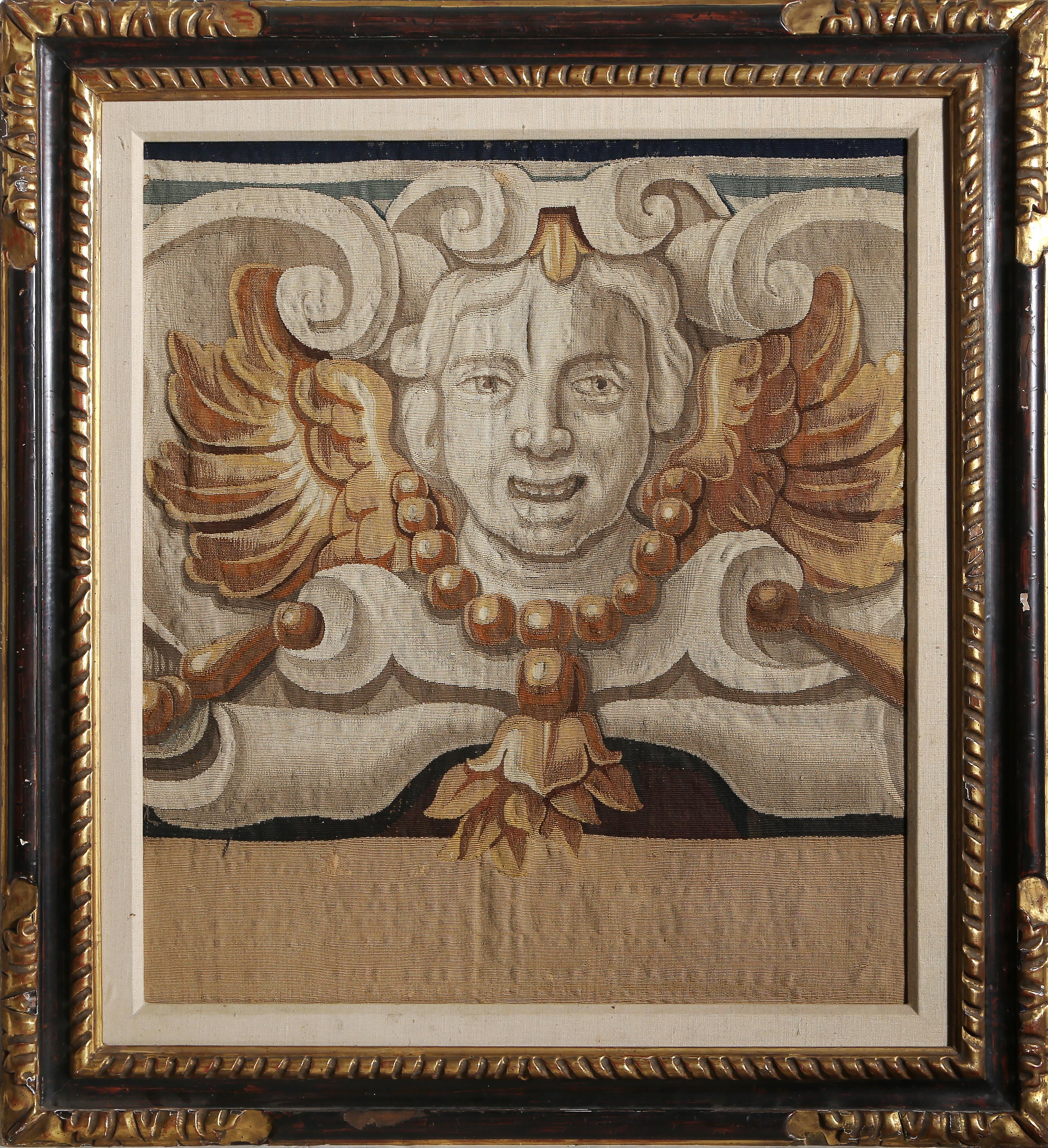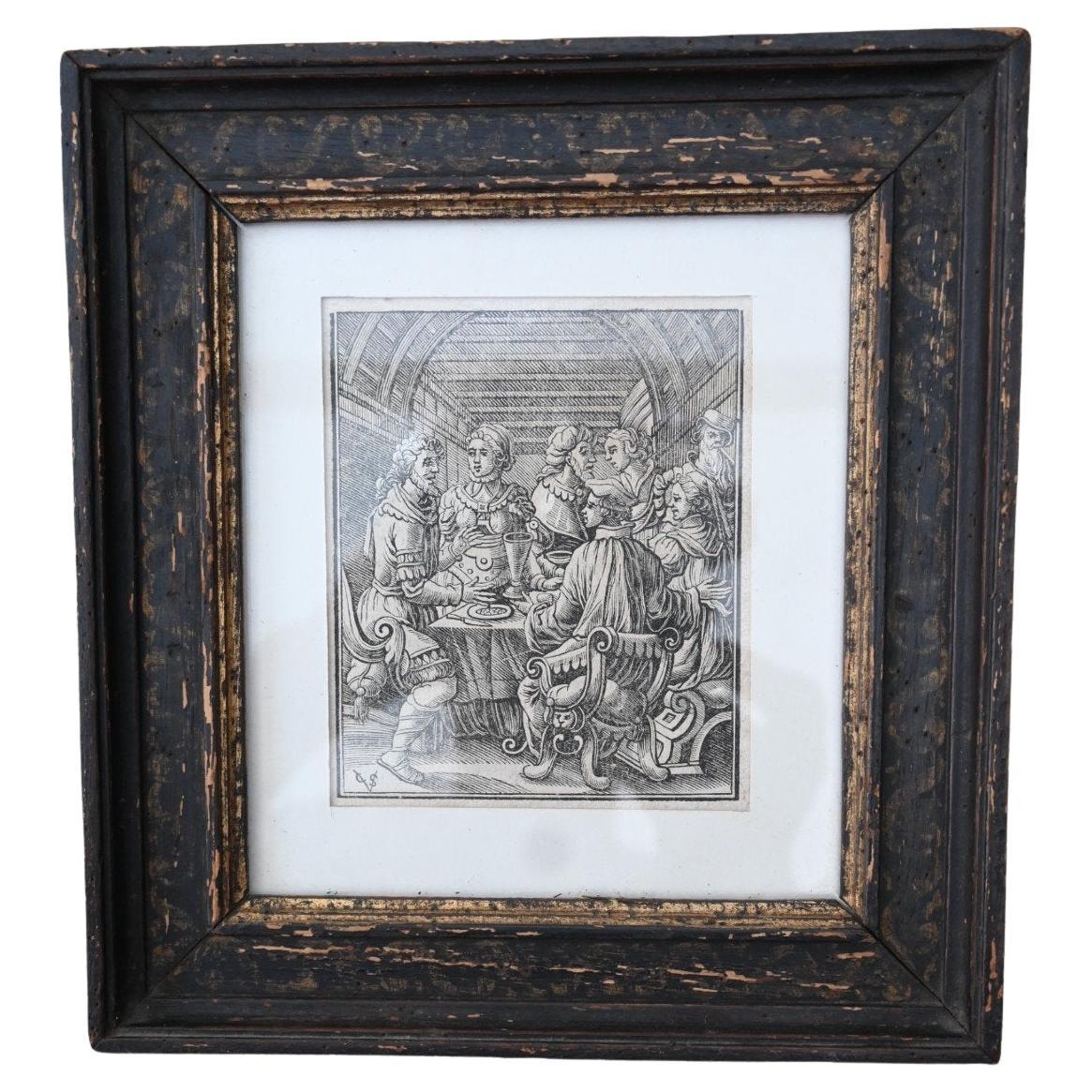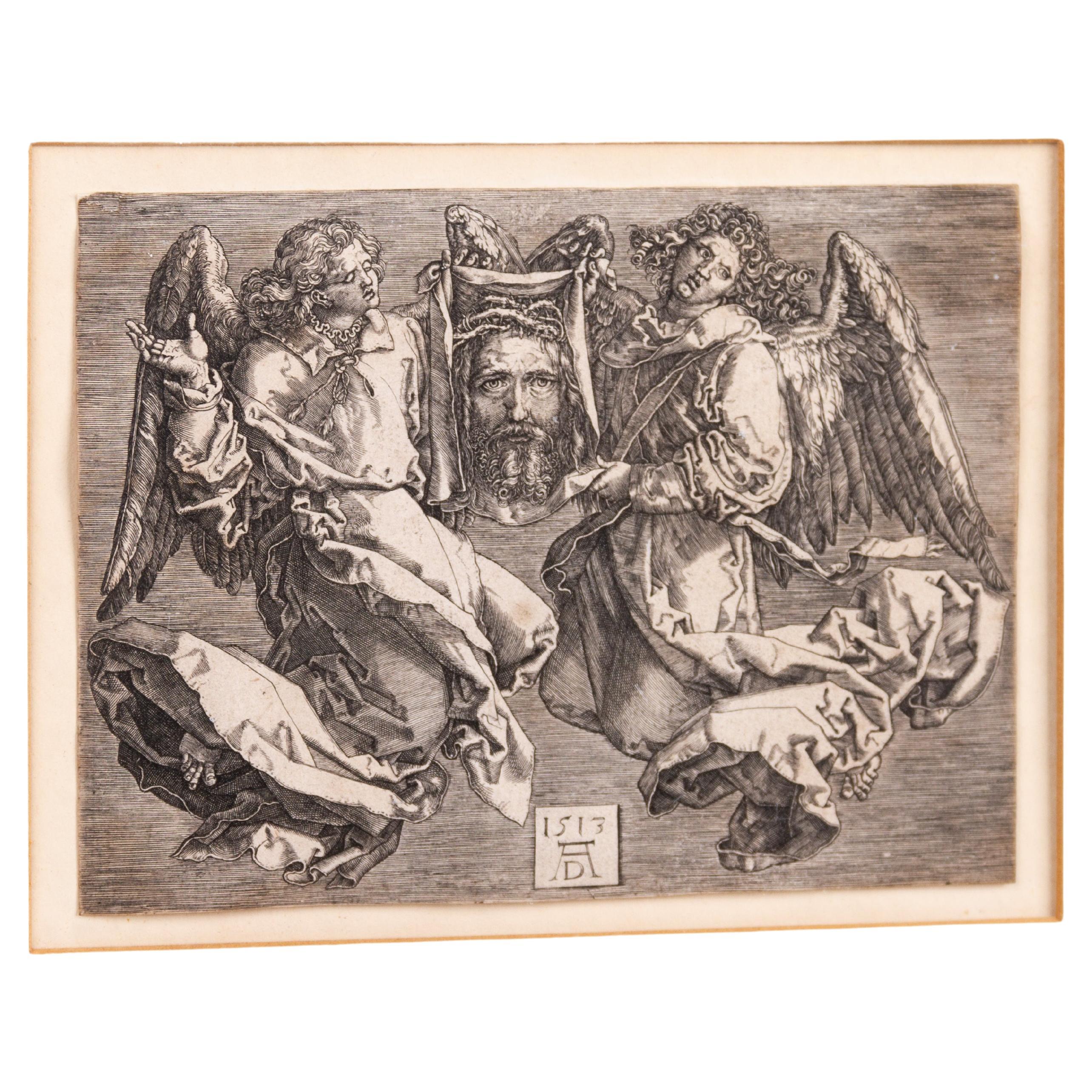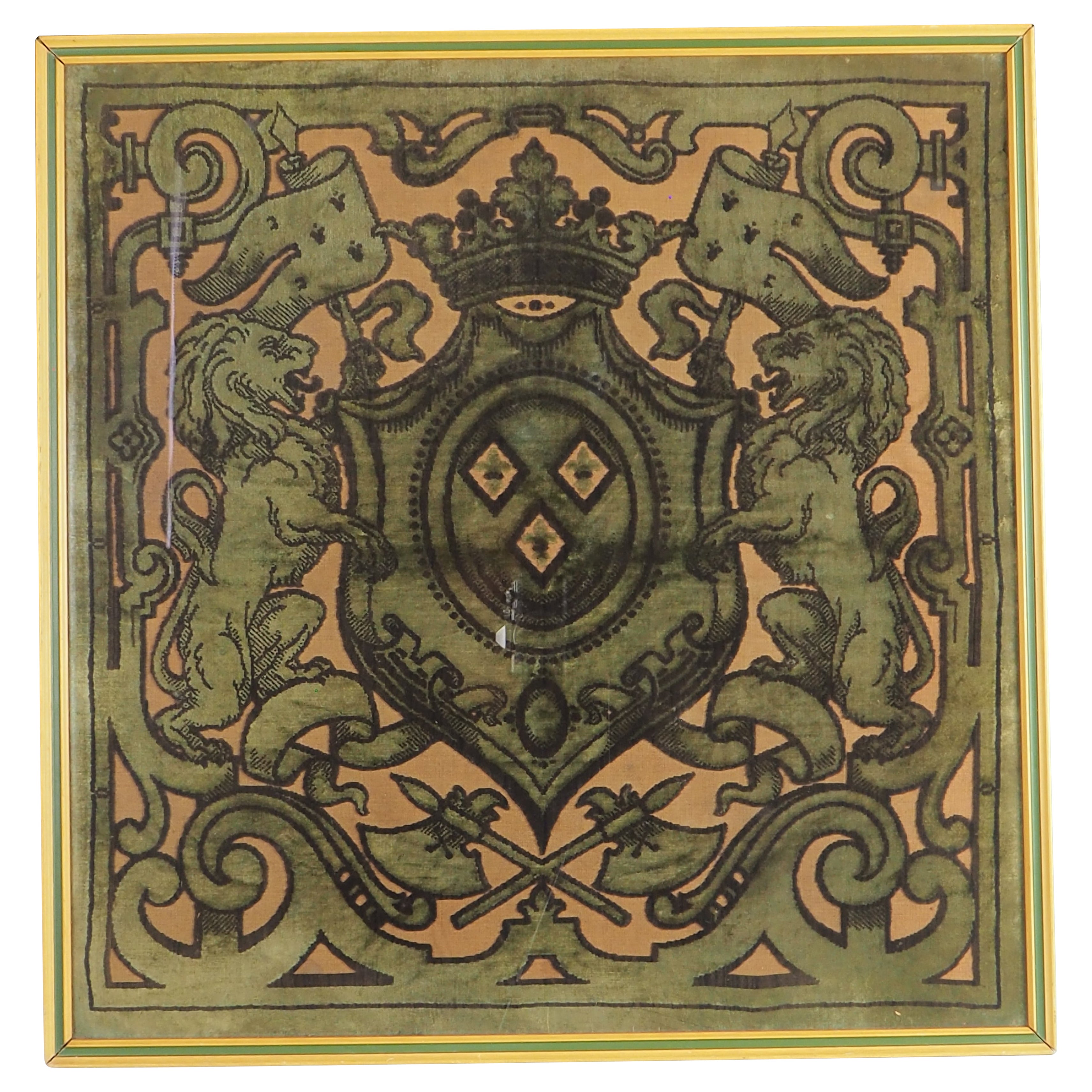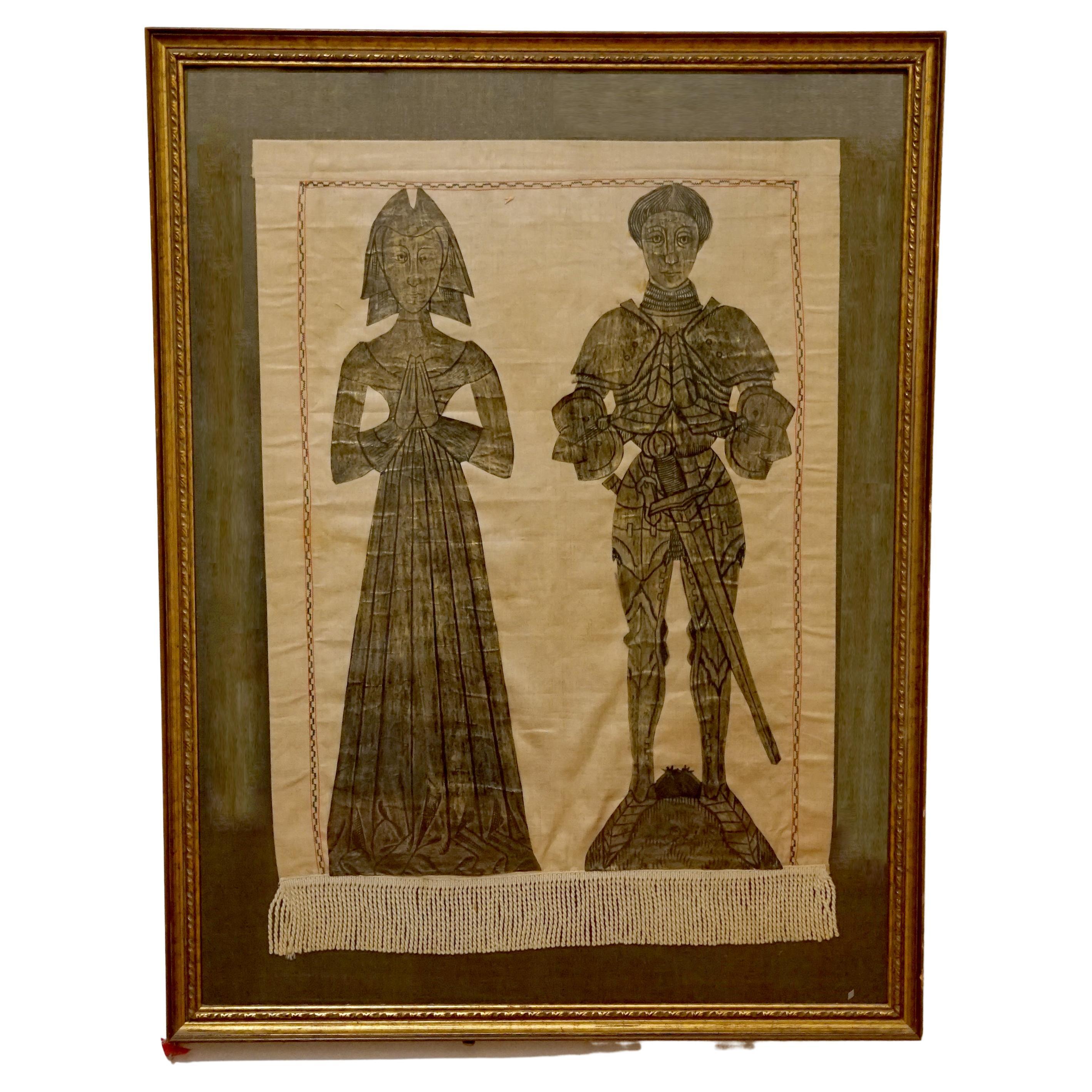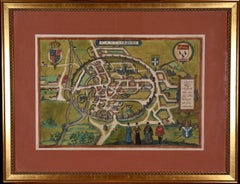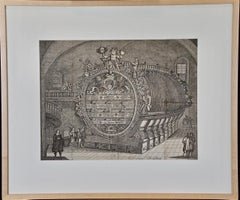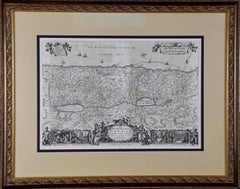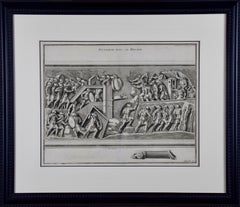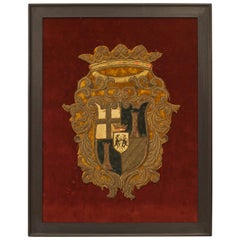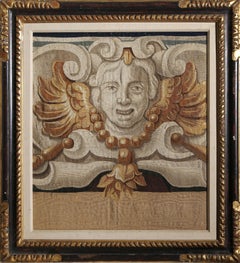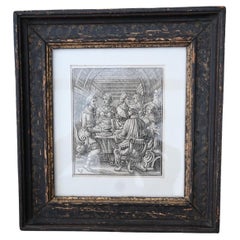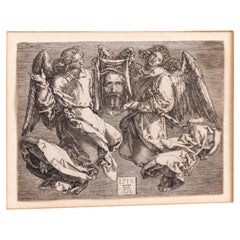Items Similar to Framed Rubbing of 1550 Brass Monument in Grote Kerk Church, Breda, Netherlands
Want more images or videos?
Request additional images or videos from the seller
1 of 14
UnknownFramed Rubbing of 1550 Brass Monument in Grote Kerk Church, Breda, NetherlandsUnknown
Unknown
$1,575
£1,193.36
€1,369.29
CA$2,216.28
A$2,436.30
CHF 1,280.41
MX$29,585.56
NOK 15,972.77
SEK 15,133.07
DKK 10,219.34
About the Item
This is an engraving of a tomb monument rubbing that has been highlighted with gold color on a dark grey to black background. The rubbing is of a brass plaque on a stone slab. It has inscriptions along the edges and an angel with a halo holding a chalice and shield. The inscription reads "Hoc saxo tegitur corpus honorabilis viri domini Adriani Roelandi Bartholomei alias Heys, sacellani huius ecclesie, qui obiit Anno Domini 1550 Iulii die septima" (Covered by this stone is the body of the honorable man, Sir Adrianus son of Roelandt Bartholomeus, alias Heys, priest of this church, who died in the year of Our Lord 1550 on the seventh day of July). Along with images of the print in this listing, an image of the actual tomb with the brass plaque is included. The tomb is in the Grote Kerk or Onze-Lieve-Vrouwekerk (Church of Our Lady), which is a prominent landmark in Breda, in the southern portion of the Netherlands. The oldest record of a stone church in Breda is from 1269. The construction of this church was begun in 1410. It was completed in 1457 but the tower collapsed in 1468. The reconstruction of the tower was completed in 1509. Although in use, additional construction projects continued until 1547. The Reformation ended the church as a Catholic place of worship in 1566 and it transitioned to Protestant in 1637.
The print is presented in a distinctive ornate black wood frame with a scalloped gold inner edge or fillet. The deep dark mauve mat is highlighted with a marbled gold fillet. The frame measures 32.25" x 32.5" x 1.5". It can be hung in a square or diamond orientation. The latter orientation places the angel in an upright position and is the orientation of the plaque on the monument. The print is in excellent condition.
- Creation Year:Unknown
- Dimensions:Height: 32.25 in (81.92 cm)Width: 32.25 in (81.92 cm)Depth: 1.5 in (3.81 cm)
- Medium:
- Movement & Style:
- Period:
- Condition:
- Gallery Location:Alamo, CA
- Reference Number:Seller: # 16291stDibs: LU117326638452
About the Seller
5.0
Gold Seller
Premium sellers maintaining a 4.3+ rating and 24-hour response times
Established in 2011
1stDibs seller since 2019
291 sales on 1stDibs
Typical response time: 1 hour
- ShippingRetrieving quote...Shipping from: Alamo, CA
- Return Policy
Authenticity Guarantee
In the unlikely event there’s an issue with an item’s authenticity, contact us within 1 year for a full refund. DetailsMoney-Back Guarantee
If your item is not as described, is damaged in transit, or does not arrive, contact us within 7 days for a full refund. Details24-Hour Cancellation
You have a 24-hour grace period in which to reconsider your purchase, with no questions asked.Vetted Professional Sellers
Our world-class sellers must adhere to strict standards for service and quality, maintaining the integrity of our listings.Price-Match Guarantee
If you find that a seller listed the same item for a lower price elsewhere, we’ll match it.Trusted Global Delivery
Our best-in-class carrier network provides specialized shipping options worldwide, including custom delivery.More From This Seller
View AllCanterbury: An Original 16th C. Framed Hand-colored Map by Braun & Hogenberg
By Franz Hogenberg
Located in Alamo, CA
This is a framed 16th century map and city view of Canterbury, England entitled "Cantuarbury" by Braun & Hogenburg, from their famous landmark atlas of city views 'Civitates Orbis Terrarum' (Atlas of the Cities of the World), which was first published in Cologne, Germany in 1572. The map of Canterbury was first published in 1588. It depicts a detailed birdseye view of the completely walled and fortified city of Canterbury, with its cathedral the most prominent feature. The coat of arms of England, Canterbury, and the Archbishop of Canterbury are included.
This beautifully hand-colored map is presented in a gold-colored wood frame with a beaded inner trim and a paprika-colored mat that highlights details in the map. The frame measures 18.75" high by 22.25" wide by 0.875" deep. There is a central vertical fold, as issued. The map is in excellent condition.
Braun and Hogenberg's 'The Civitates Orbis Terrarum' was the second atlas of maps ever published and the first atlas of cities and towns of the world. It is one of the most important books published in the 16th century. Most of the maps in the atlas were engraved by Franz Hogenberg and the text, with its descriptions of the history and additional factual information of the cities, was written by a team of writers and edited by Georg Braun. The work contained 546 bird-eye views and map views of cities and towns from all over the world. It gave graphic representation of the main features of the illustrated cities and towns, including the buildings and streets. Although the ordinary buildings are stylized, the principal buildings are reproduced from actual drawings created on location. The principal landmarks and streets can still be recognized today. In addition, the maps often include the heraldic arms of the city, the nature of the surrounding countryside, the important rivers, streams and harbors, even depicting stone bridges, wooden pontoons, flat-bottomed ferries, ships and working boats, wharves and jetties, as well as land-based activities, including horsemen, pedestrians, wagons, coaches, and palanquins. Small vignettes are often included which illustrate the trade, occupations and habits of the local inhabitants, such as agriculture, paper-making and textiles, as well as local forms of punishment, such as gibbets, wheels, floggings etc. Large figures dressed in their local costume are often presented out of proportion in the foreground. The aim of the authors was to give as much information as possible in a pleasing visual form. They succeeded in creating maps that were both informative and decorative works of art. The atlas is a wonderful glimpse of life in medieval Europe.
Georg Braun (1541-1622) was German Catholic...
Category
16th Century Old Masters Landscape Prints
Materials
Engraving
The Heidelberg Tun: A Framed 17th Century Engraving of a Huge Wine Cask
Located in Alamo, CA
"The Heidelberg Tun" is a 17th century engraving by an unknown artist. It depicts a famous huge ornamental wine cask that resided in the wine cellar of Heidelberg Castle. The cask shown here, built in 1664, is the second of four Heidelberg Tuns; the first was destroyed during the Thirty Years' War, between 1618 and 1648. This cask was built in 1664 when Karl Ludwig ordered Heidelberg cellar master...
Category
Late 17th Century Old Masters Interior Prints
Materials
Engraving
17th Century Dutch Map of the Holy Land at the Time of Jesus by Visscher
By Nicolaus Visscher
Located in Alamo, CA
This detailed Dutch map entitled "Het Beloofe de Landt Canaan door wandelt van onsen Salichmaecker Iesu Christo, nessens syne Apostelen" by Nicolaes Visscher (1610-1679), published i...
Category
1660s Prints and Multiples
Materials
Engraving
18th Century Engraving "Attack with a Battering Ram" by Montfaucon
Located in Alamo, CA
This early original copper-plate engraving entitled "Attaque avec le Belier" from 'L'antiquité expliquée et représentée en figures' (Antiquity Explained and Represented in Diagrams), published in Paris in 1719 by Bernard de Montfaucon. It depicts an ancient...
Category
Early 18th Century Old Masters Landscape Prints
Materials
Engraving
Daniel Marot's The Siege of the Dutch Fortified City of Ypres by Louis XIV
By Daniel Marot
Located in Alamo, CA
"Ypres, Grand Ville Riche & Marchande" is an engraving and etching by Daniel Marot (le Vieux) (1661–1752). It depicts a view of the siege of the city of Ypres and its citadel on the left in the Spanish Netherlands by Louis XIV's troops. This battle took place between March 18 and March 25, 1678, as part of the Franco-Dutch War. Marot illustrated in great detail (best appreciated with magnification) the French attack on the strong pentagonal citadel on the extreme left, which had been built recently in anticipation of a French attack. The trenches built by the French approaching the town are seen on the right. King Louis XIV can be seen in the foreground surveying the battle mounted on his white horse, surrounded by his officers and troops.
The print is presented in an attractive ornate black wood frame with a cream-colored double mat with a black inner trim. It is glazed with plexiglas. The frame measures 25.38" x 22.63" x .88". The engraving, frame, mat and glazing are in excellent condition.
Artist: Daniel Marot (1661–1752) was also called "Le Vieux". He was the son of the famous architect, Jean Marot. Marot had diverse interests and talents. In addition to his art, he designed garden projects, architectural ornaments, furniture, and even upholstery. Marot as a Huguenot protestant was forced to leave France in 1685 following the revocation of the Edict of Nantes. He emigrated to Holland, where he worked for William of Orange (an arch enemy of his former employer Louis XIV). Marot was largely responsible for the interiors of Williams palace at the Loo. In 1694 he went Britain as William had married Queen Mary and he had become King William III of England. He later returned to Holland in about 1698 and died in the Hague in 1752. He left a lasting legacy on the decorative arts in the Netherlands, where his grand version of the Louis XIV style remained popular into the 1730s.
Historical Background: In October 1677, Mary Stuart, niece and possible successor of Charles II of England, married Louis XIV's arch enemy William III of Orange...
Category
Late 17th Century Old Masters Landscape Prints
Materials
Engraving, Etching
Three 19th C. Engravings of Classical Italian Bronze Architectural Elements
Located in Alamo, CA
A grouping of three engravings depicting classical Italian architectural features held in the National Museum of Naples, entitled "Bronze Hydria", "Marbre Naissance de Bacchus" and "...
Category
1880s Other Art Style Still-life Prints
Materials
Engraving
You May Also Like
English Renaissance Framed Crest Embroidery
Located in Queens, NY
English Renaissance embroidery of a crest having a crown top mounted on a red velvet background in an ebonized wood frame.
Category
Antique 16th Century English Northern Renaissance Decorative Art
Materials
Thread, Velvet, Wood
Framed Flemish Tapestry
Located in Long Island City, NY
Unknown Artist - Flemish Tapestry, Medium: Tapestry, Size: 26 x 23 in. (66.04 x 58.42 cm), Frame Size: 34 x 31 inches
Category
17th Century Flemish School Portrait Prints
Materials
Tapestry
Christoffel Van Sichem Ii, Dutch (1577 - 1658), Woodcut, 1646, Framed
Located in Bilzen, BE
Christoffel Van Sichem II (1577 - 1658)
Title: Banquet scene with three young couples, an old man standing at right Series/Book
Title: Bibel Tresoor ofte der Zielen Lusthof, Amsterda...
Category
Antique 1640s Dutch Louis XIII Prints
Materials
Wood, Paper
Albrecht Dürer 16th Century Old Master Engraving The Sudarium Of Saint Veronica
Located in Nottingham, GB
Albrecht Dürer 16th Century Old Master Engraving The Sudarium Of Saint Veronica
Good condition overall, framed and mounted under protective glass....
Category
Antique 16th Century Prints
Materials
Paper
Authentic 19th Century Velvet Tapestry Featuring Coat of Arms
Located in Lincoln, GB
Authentic 19th Century Velvet Tapestry Featuring Heraldic Coat of Arms
Velvet has long been cherished for its luxurious texture and rich hues, making it a preferred fabric for cerem...
Category
Antique 19th Century Tapestries
Materials
Tapestry, Velvet
English or Continental Gothic Revival Rubbing of Knight and Lady
Located in Lomita, CA
A Gothic Revival style engraved brass rubbing, English or Continental, from the 19th Century. This is a beautiful piece with two figures who are dressed in elaborate clothing reserve...
Category
Antique Late 19th Century Gothic Revival Paintings
Materials
Silk
$879 Sale Price
20% Off
More Ways To Browse
Antique Monument
Brass Framed Art
Scalloped Frame
Antique Brass Plaques
Ornate Wood Frames
Used Stone Slabs
Stone Plaque
Antique Stone Slabs
16th Century Brass
Salvador Dali Signed Purgatory Canto
Salvador Dali Tapestry
Salvador Dali The Doctor
Salvador Dali The Kiss
Salvador Dali The Lovers
Salvador Dali The Ship Of Souls
Salvador Dali Tree Of Knowledge
Sarah Slappey
Shag Josh Agle
